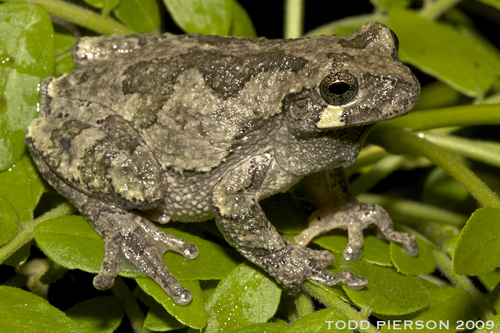
Gray Treefrog
The Gray Tree Frog, Hyla versicolor, is a master of disguise with its color-changing skin and unique trilling call. This small, nocturnal amphibian thrives in North American forests, using its sticky pads to climb and blend effortlessly into its environment. A vital component of the woodland ecosystem, it keeps insect populations in check.
7 years
Lifespan
7.09 g
Weight
Length: 3 - 5 cm
Size
Brown, Grey, Green
Color
2 years
Age of Sexual Maturity
45-65 days
Age of Weaning
Distribution Range of the Gray Treefrog
Hyla versicolor, commonly known as the gray treefrog, is native to North America. Its geographical distribution spans the eastern United States and southeastern Canada. Specifically, it is found from southern Ontario and Quebec in Canada, extending southward into the United States, reaching as far as eastern Texas and northern Florida, and eastward to the Atlantic coast.
Gray Treefrog's Habitat
Environmental Conditions
The gray treefrog inhabits a variety of forested environments, including deciduous and mixed woodlands. It is often found in areas near permanent or temporary bodies of water such as ponds, lakes, swamps, and marshes. This species thrives in humid conditions and requires elevated, moist environments due to its arboreal lifestyle.
Ecological Niche
Hyla versicolor is adapted to live in treetop habitats, using its excellent climbing skills facilitated by sticky toepads. This species primarily feeds on insects and other small invertebrates. It plays a role in controlling insect populations and serves as prey for larger predators, contributing to its ecosystem's trophic structure. During the breeding season, which typically occurs from late spring to early summer, it relies on aquatic environments for egg deposition and tadpole development.
Copyright @ Nature Style Limited. All Rights Reserved.
 English
English